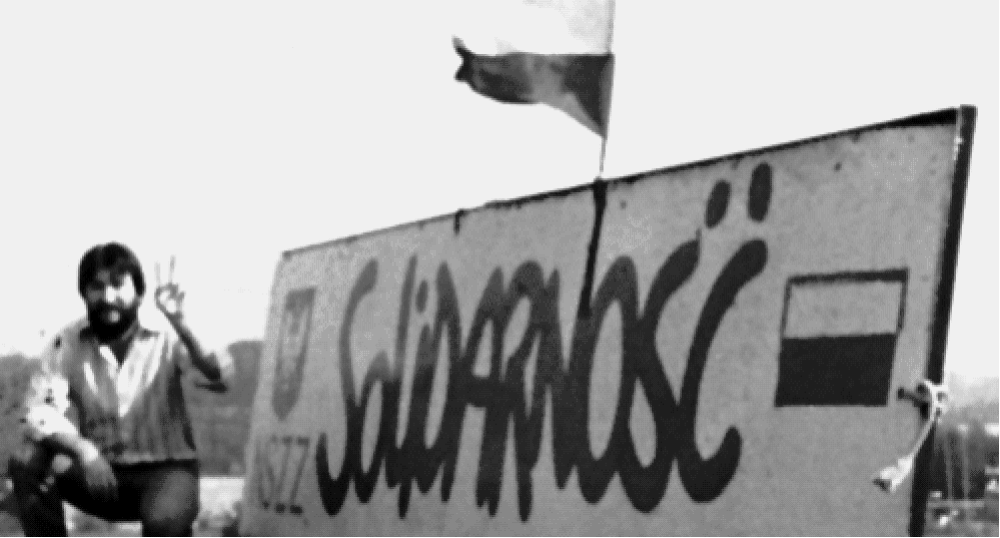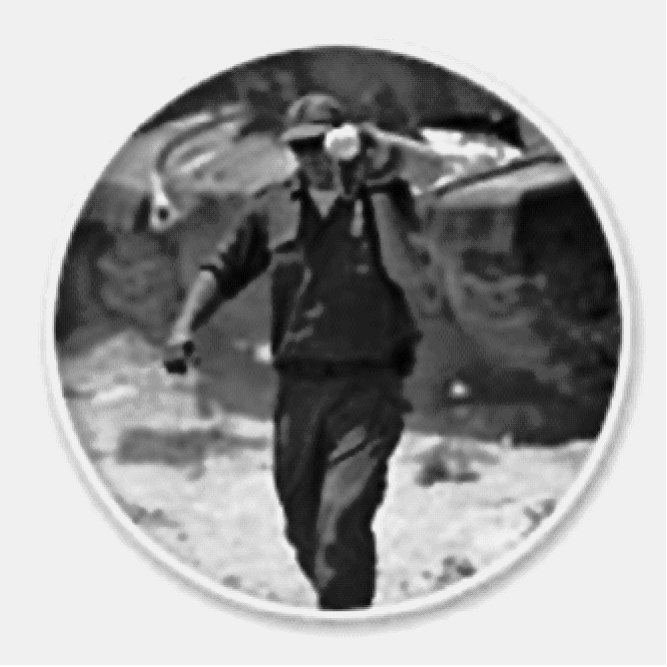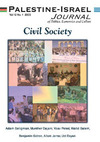The inability of the leadership on both sides to bring about peace has many causes. However, the dreadful headlines and news in the Israeli daily press do not always tell the simple truth that questions of peace and war are not dependent on leadership's decisions alone; they are the result of structural changes that influence the general reality.
Some major works have already described the way Israeli society has been undergoing significant changes under the influence of globalization and the end of the Cold War, not only in the fields of immigration, communications, privatization of the economy, consumption, modes of life and cultural tastes, but also in the way the Israeli nation-state is perceived by its inhabitants.
In this paper I will present a specific structural change happening in Israel and the way it influences the Israeli-Palestinian conflict.
Impact of Globalization
Beginning in the economic realm and spreading toward many other spheres, globalization generated reciprocal relations and interdependence that to one degree or another overrode borders, states, and national affinities. The state was forced to confront new opponents, both from above and from below, which often challenged its authority. The pressure from below emanated in many places from local social movements, which demanded that specific new issues such as human rights, women, environment, minorities, peace, etc., be given priority over others. In many cases, these movements enjoyed considerable success, which indicates that, while it may be too soon to eulogize the nation-state, its "finest hour," has probably passed. From this point of view, globalization can constitute a kind of window of opportunity, theoretical as well, to "bring society back in" to the international relations analysis.
The Israeli Example
The end of the 1980s and the start of the 1990s saw a flourishing of associations in Israel, representing different needs, wishes and even visions. The new phenomenon marked a significant change compared to the collectivist character of the past, in which statism, the Israeli main organizing principle, was based on effective control of state bureaucracies and institutions over nearly all spheres of life. The new cultural-political phenomenon appeared in the form of protest, guided by grass-roots organizations, non-profit associations, new social movements and even new political parties. They all waged struggles for a long list of causes, including not only peace and anti-militarism, but also civil rights, discrimination in the work place, sexual harassment, gay and lesbian rights, animal rights, civil marriage and burial, nature conservation, environmental health hazards, to name just a few of the numerous topics that became part of the new Israeli discourse.
According to the government registrar of non-profit associations, there are close to 32,000 such associations in Israel today. In 1982, there were only 3,000. These associations differ from one another by their level of organization, objectives, strategies, style, identity and relationship with the state. It is abundantly clear, however, that they represent a new phenomenon on the Israeli landscape. The significance of the new phenomenon of associations and movements can be examined in many ways. One way is to ask whether they form a civil society in Israel, and do they have any substantial influence on questions of peace and war in the Middle East? In order to answer this question, a pinch of theory is needed so that evidence would be interpreted accordingly.
The Radical Model
The term "civil society" has been used for the past twenty years, or so, as a container into which a whole universe of meanings and interpretations has been stuffed. Despite this limitation, the term still has vitality as a concept that describes the possibilities of individuals to stand against any states or markets arbitraries. One model of civil society that can be used as a guide for understanding the Israeli phenomenon of associations is the so-called radical model. This model was primarily developed in the wake of events surrounding protests of the Solidarity Movement against the Polish government during the 1980s. Civil society, according to this model, is identified as a realm of activity which includes associations, organizations and new social movements that are linked with one another in various networks, motivated by ideal interests no less than by material interests, aiming to limit state power, to extend participatory democracy, to raise new issues and problems and garner influence on general reality, mainly by launching an alternative discourse that contains a meta-political critique of the existing social order.
Does the Israeli new phenomenon follow that path? Even a simple observation would raise a negative answer. Many of the associations are busy with developing and presenting a new lifestyle, which Inglehart and others described as being based on post-material values and a "non-political" definition of reality typical now to neo-liberal regimes. Through this orientation, local politics frequently assumes greater importance than national politics. At first this seems to be an extension of the democratic process. However, it might have a different meaning: an indication that many Israelis seem to have grown weary of the big questions, and the difficulties of finding solutions to them. They now prefer to lock themselves into narrow frameworks, communities and even sectors.
The new phenomenon of collective action and participation mostly offers opportunities for negative freedom only. People want to prevent pollution, abate noise, protect their animals, homes, neighborhoods, environment, etc. This is how they define their small world, and defending that world seems sufficient. In light of the collectivistic, statist past of Israeli society, it is no wonder that Israeli associations are seeking a private domain in which they can find relief, and that they have adopted an across-the-board posture of self-defense. This, however, is far from creating a genuine civil society that could make a transition from isolation to cooperation and from preference to ability and present a new, comprehensive culture of peace that is translated into practicalities.
This was illustrated in a letter sent by "The Israeli Society for the Preservation of Nature" to candidates in the local and municipal elections in July 1993: "Dear Candidate, We consider you the significant factor for moving ahead on environmental issues. As for the future of the Occupied Territories and the economy - the government will decide. As for the resident's quality of life, you decide" (SPNI, a letter, 11.7.93, Secretary 505).
The tendency towards an isolated, separated, apolitical, post-material perspective is a chronic difficulty for the embryonic Israeli civil society to serve as a harbinger for peace. Another obstacle can be presented through a different model of civil society.
The Civilianized, Non-Military Model
This model is based on a long European tradition which regards the "civil," as opposed to the "military," the "barbaric," or the "uncivilized." From 18th century Adam Ferguson to 19th century Herbert Spencer, this tradition defines a society which directs all its energy towards industrialism, commercialism and open markets as against a society which is busy with army and war in a more hierarchical and authoritarian manner. Following this model, Norbert Elias described the "civilizing process" which involved what he called a change of sentiments, which became part of the habits of every human being. Is the Israeli society facing now a "civilizing process," diverting its material and cultural resources away from the military and the military solution to political problems?
In the second half of the 20th century, European and Western civil societies, frequently through peace movements and human-rights movements, mounted a challenge to the way the nation-states used their means of violence and legitimized it. Some would say that the Israeli peace movements acted in a similar light. Many of them emerged during the Lebanon War in the early 1980s and reached maturity during the first intifada. They are characterized by their unequivocal political messages and the general objection to the traditional security thinking that was part of the nation-state in the past. Nevertheless, their practices are moderate. For example, Peace Now, the main peace movement in Israel, is opposed to conscientious objection. Even the conscientious objectors themselves, during the second intifada, do not contest the principle of military service, only the idea of serving in the Occupied Territories and taking part in oppressing another people. In fact, the first two years of the al-Aqsa intifada reduced the influence of the Israeli peace movements to almost nil. This phenomenon can only be partly explained by the waves of terrorist attacks that swept Israel, and the Israeli public feeling that Yasser Arafat turned down a generous Israeli-American offer at Camp David II. The other reason lies again in the structural changes that Israel is facing.
Israeli Society Is Divided along Identity Lines
Effectively, post-modern or post-statist Israel has generated conflicting tendencies that have completely divided the Israeli society along identity lines. It is possible to see the emerging division as parallel to one of Anthony Giddens' main argument in his book, Beyond Left and Right. The late, reflexive modernism, he claims, is characterized by a constant struggle over the definition of reality between the exponents of cosmopolitan, universal values who accept change, openness, coexistence, and cultural plurality, and advocates of a fundamentalist, particularist, exclusivist identity who want to isolate themselves from foreign influences. Indeed, peace movements, human-rights organizations and other associations that promote peace in Israel resemble and identify themselves with the civil, peace-seeking tendency that is emerging around the world. They link questions of peace and war to the natural rights of men and the right of all nations to self-determination, while urging a political compromise and conciliation between Israel and its neighbors. On the other hand, and again as in many other countries, a counter-reaction to globalization has sprung up in Israel, in the form of social forces that reject openness and cosmopolitanism. Driven by neo-traditional, ultra-nationalist, atavistic, and religious principles, they are demanding the use of force and military means to resolve the country's ethno-national problems.
Both of these forms in their Israeli version have origins in the country's past. The difference now is that a concrete challenge is being mounted to the nation-state and its basic truths by raising new identities and orientations toward reality at large. This cleavage, between the civil society and the military society manifested itself clearly during the period of the Rabin government. It has experienced a revival in the last years of the second intifada.

Solidarity in Poland, one model for civil society
Attitude towards Military Service
This is manifested in the motivation to do military service. In the Israeli nation-in-arms, the possibility of not being drafted and not doing army service was simply not a subject for discussion. In the post-modern era, however, two different approaches have emerged, especially in the last decade, regarding motivation to serve. In army slang the two types were differentiated as "shirkers" and "fanatics" (the Hebrew terms are mishtamtim and mur'alim, literally meaning individuals who are "poisoned" with the desire for gung-ho combat and prepare for it accordingly). In everyday life, although conscription still exists in Israel, the two social types - fanatics and shirkers - are commonplace phenomena.
Another indication of that rift within the Israeli society during the second intifada is manifested through the phenomenon of anti-statist conscientious objection emerging in both right and left. On the right of the political spectrum, given the plan to withdraw from the Gaza Strip and some areas in the northern West Bank, many of the settlers doing their military service in both compulsory and reserve units, declared that their rabbis' rulings to resist any evacuation of settlements in "The Land of Israel" are more obligatory than obeying the state's laws. On the left, as well, conscientious objection has been practiced during the four years of the second intifada, with activists declaring that it is not their duty to fight in this kind of war. Social movements of soldiers and officers in the reserves, such as Ometz Lesarev (Courage to Refuse), Shovrim Shtika (Breaking the Silence), a Jewish-Palestinian partnership, such as Ta'ayush (Living Together), and the peace movement Gush Shalom (Block of Peace) all claim that repressive operations in the territories are illegal according to national, moral, and international law.
Bereavement in the 1990s and the 2000s also exposes crucial differences within the divided Israeli society, through comments made by parents who lost sons. A striking case in point is Manuella Dviri, who became a preeminent representative of a peace-oriented civil society. The conclusion she drew from the death of her son is clear: "My duty toward this child, who dwells within me," she said, "is to say the truth always and not to be silent. Not to allow people to forget that… we must make peace with the Palestinians." A different type of bereavement also sprang up, albeit in a different sector, that of the military society. "If there is no longer any point in dying for one's country," explained a settler who lost his son, "and if life is a supreme value, what exactly is supposed to happen when the enemy's final assault comes? … Will we be trampled here beneath the boots of a foreign occupier? The dead sacrifice their lives above all to ensure one of the most basic needs of people - nationalism...."

In the past, not being drafted wasn't a subject for
discussion.
Conclusion
To conclude, the two emerging societies in Israel are part of the trend in which global, universal, cosmopolitan principles are clashing with a conflicting set of principles that are local, particularist and even fundamentalist in character. With a weak civil society, exponents of the military society in Israel are engaged during the last four years in a struggle to force Israel to continue to use its military power over the Palestinians. The al-Aqsa intifada demonstrates the influence upon a conflict reality, not only of the army generals and the statesmen (who are frequently ex-generals themselves), but of Israeli military society as well. Many obstacles for peace exist in the Middle East. This essay depicts one more: the post-modern, post-Zionist schism that exists now in Israel, characterized by a weak civil society on the one hand, and a strong military society on the other.

